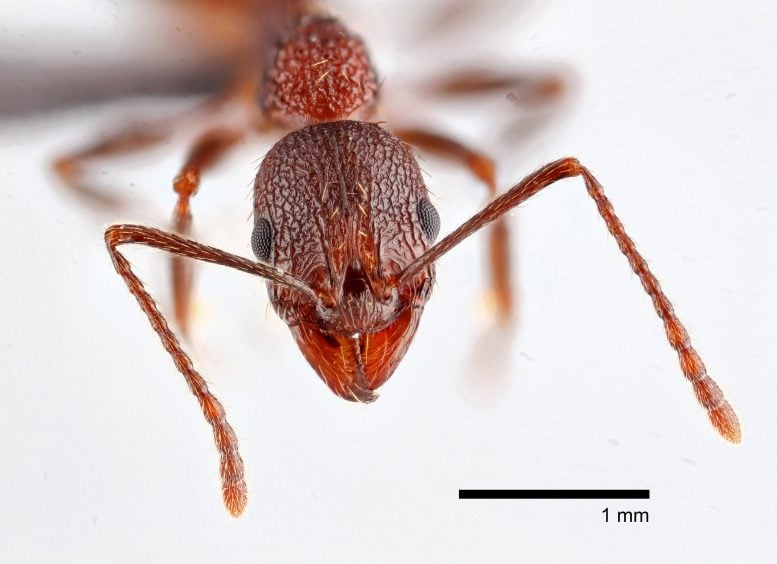Unusual Ant Colony Discovered in North Carolina: A Victory in the Treetops

Michelle Kirchner, a researcher from North Carolina State University, made a noteworthy discovery by documenting a full colony of the scarcely known Aphaenogaster mariae Forel ants in the Triangle region of North Carolina. The lack of understanding about this particular ant species, generally found in tree canopies, was due to a scarcity of information about the male ants. Credit: Matt Bertone
The uncovering of this unusual ant colony by Michelle Kirchner has brought new knowledge about a species that was predominantly unknown before. This encourages more investigations in ecology.
These species of ants are so exceptional that there are only a minuscule number of records of them from the entire eastern part of the United States. Michelle Kirchner has not just discovered this species in the Triangle part of North Carolina, but she is also the first to create records of a complete colony for scientists, taxonomists, and ant enthusiasts globally.
The Aphaenogaster mariae Forel ants, a type of rare spine-wasted ant, are distinct from their counterparts that mostly nest within the detritus of forests. These ants typically reside high in tree canopies for most of their life. While living in trees is quite usual for ants in tropical regions, until now, little was known about such ant species in the Triangle region.
“I never anticipated to discover these ants, so it was surprising when I found a complete colony,” says Michelle Kirchner, the main author of a research paper on the subject and a Ph.D. candidate in applied ecology and entomology at NC State. “With the documentation of an entire colony, we have been able to chronicle every life stage of this unusual ant species, an undertaking never before completed in science.”
Up to now, there are no photos or recorded collections of the males of this species. Moreover, the information about the number of populations present, their habitats, or their locations is also unidentified. But, the fresh, thorough details about all members of the colony offer some hints.
“The queen ants of this species are comparatively smaller than other ant queens,” says Kirchner. “Their tiny size is reminiscent of parasitic ant queens, as their small stature aids in being easily mistaken as a fellow worker ant by a colony that they are about to invade.”
In North Carolina, about 250 ant species have been documented, and Kirchner’s rediscovery of this species contributes to a better comprehension of the distinctive biodiversity of North Carolina.
"“We are uncertain of the prominence of this species in the ecology of Triangle forests,” says Kirchner. “This distinctive surveying initiative has altered our findings and perspective about the possibilities that exist. There are still mysteries to be unraveled, even in the Neuse River game lands.”
“In the case of a species so rare that conclustions about its rarity can't be reached, Michelle’s observations suggest these species are somewhat localized, but extensive exploration is still needed,” says Elsa Youngsteadt, a professor of applied ecology at NC State and co-author of the research.\
More on this can be found in the reference: “Colony structure and redescription of males in the rarely collected arboreal ant, Aphaenogaster mariae Forel (Hymenoptera: Formicidae)” by Michelle Kirchner, Matthew Bertone, Bonnie B. Blaimer and Elsa Youngsteadt, publication date 16 November 2023, in the Proceedings of the Entomological Society of Washington. DOI: 10.4289/0013-8797.125.1.77
Matthew Bertone of NC State University and Bonnie Blaimer of the Leibniz Institute for Evolution and Biodiversity Science were also included as authors in the paper.




